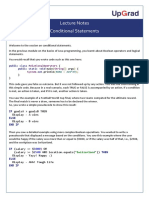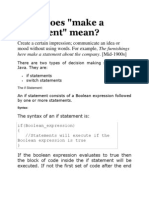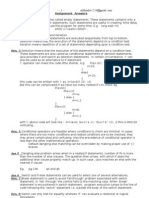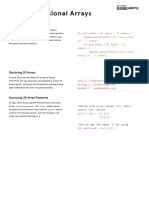0% found this document useful (0 votes)
149 views12 pagesConditional State Notes
The document contains a sample quiz with multiple choice questions about Java programming concepts like switch statements, if-else statements, and logical errors. It also includes questions that test the ability to predict the output of code snippets involving conditional statements. The answers provided explain the use of different conditional statements and jump statements in Java along with examples.
Uploaded by
Samrudh MysoreCopyright
© © All Rights Reserved
We take content rights seriously. If you suspect this is your content, claim it here.
Available Formats
Download as PDF, TXT or read online on Scribd
0% found this document useful (0 votes)
149 views12 pagesConditional State Notes
The document contains a sample quiz with multiple choice questions about Java programming concepts like switch statements, if-else statements, and logical errors. It also includes questions that test the ability to predict the output of code snippets involving conditional statements. The answers provided explain the use of different conditional statements and jump statements in Java along with examples.
Uploaded by
Samrudh MysoreCopyright
© © All Rights Reserved
We take content rights seriously. If you suspect this is your content, claim it here.
Available Formats
Download as PDF, TXT or read online on Scribd
/ 12























































































